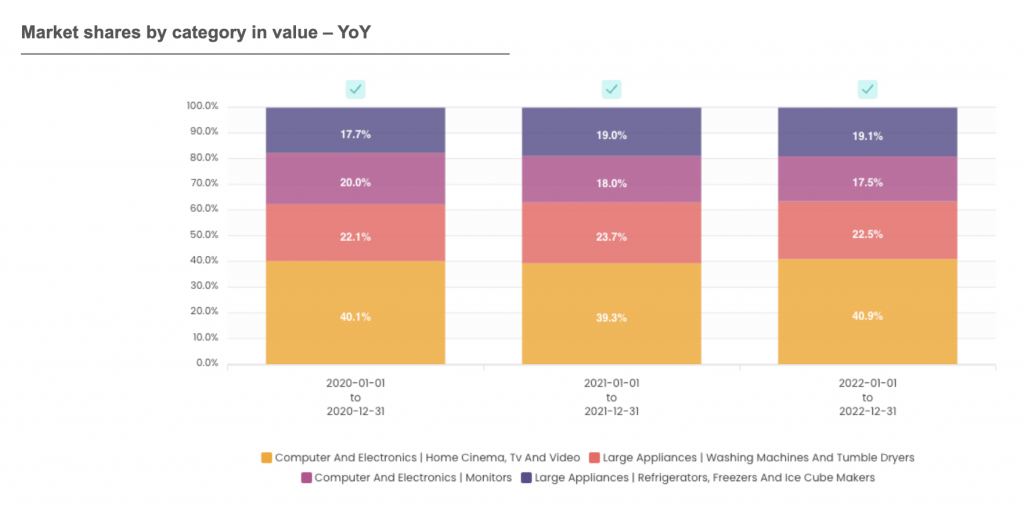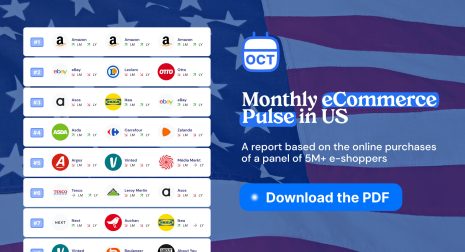For a brand, allocating its retail media budget in a methodical way can prove difficult. There are many players on the market. They promote their solutions, their 1st party data and the benefits they can bring to the brand in question. But without visibility of the market as a whole, it’s impossible to allocate retail media investments in a data-driven way, and get maximum ROI out of them.
For example, a high-tech brand can use Foxintelligence to better understand its competitors’ category sales, then prioritize the retail media players, categories and products that are key to it – and de-prioritize those that represent too little potential.
➡️ On the Foxintelligence platform, it is possible to analyze market share by category, in terms of both value and volume. Here, for example, the “Home Cinema, TV and video” category accounts for 40% of the “Computer & Electronics” category’s market share by value. Within this category, the market shares of the “Monitors” and “Refrigerators” categories are almost equivalent. However, market share of the 1st category has been declining over the last 2 years, while the share of the 2nd category is increasing.
In addition to betting on “Home Cinema, TV and video,” which represents 40% of the category’s market share, the brand can decide to allocate budget to the Refrigerators category, since it is the one that has seen the biggest uplift since 2020.
(This data can be downloaded from the Foxintelligence platform).
To determine which brand(s) it is investing its retail media budget with, the same high-tech brand can analyze the online market shares of the various brands in the “Computers & Electronics” category..
➡️ Looking at which brands are capturing the most market share, and how they have evolved since the start of the year, we can see that Amazon and Boulanger are in the lead. Even if their market share is falling, to the benefit of Rakuten whose market share tripled between January and April 2023, they are still in the lead.
At the same time, the brand can analyze value sales by gender and generation, to define the profile of consumers with the most potential.
Brands depend on data from retailers. Without Foxintelligence, their only option is to trust that data.
With Foxintelligence, instead of investing their media budget with no real visibility – or on the basis of non-transactional data – brands can optimize their investments in a very precise way: based on the market as it exists today, thanks to data updated in real time.





